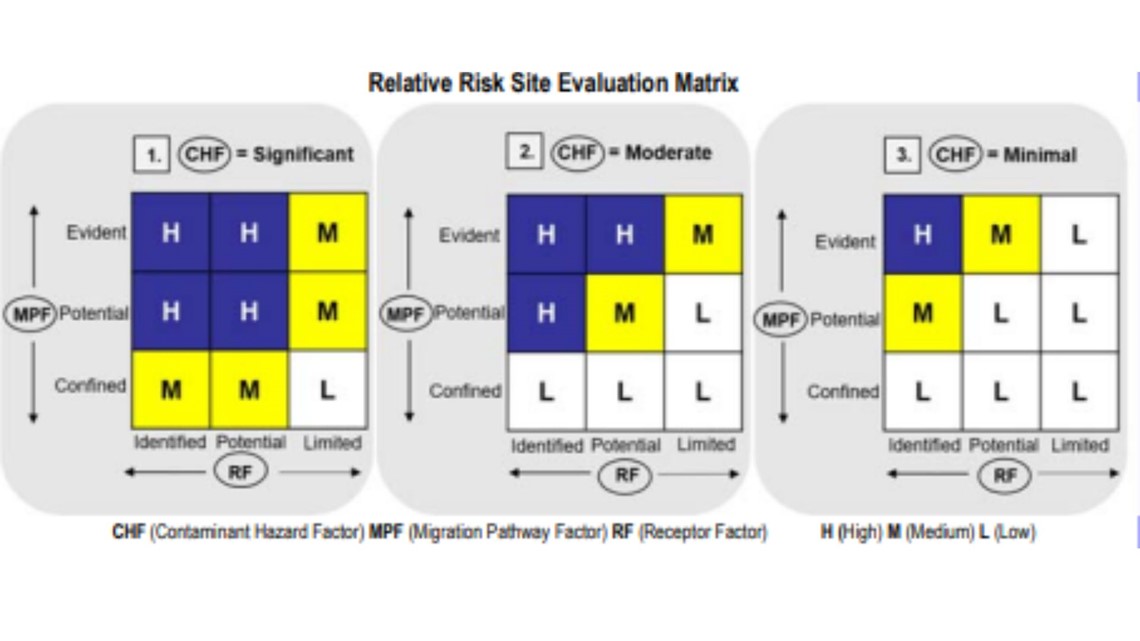SWANTON, Ohio — A report issued by the 180th Fighter Wing of the Ohio Air National Guard Friday revealed there are "high-levels" of long-lasting, potentially harmful chemicals in drinking water around the unit's local base.
The study examined the levels of perfluorooctane sulfonate (PFOS), perfluorooctianoic acid (PFOA) and perfluorobutanesulfonic acid (PFBS) at the 180th Fighter Wing in Swanton. These substances, sometimes called "forever chemicals" are known collectively as PFAS, break down very slowly and are found globally in the the blood of people, animals, food products and in the environment, according to the EPA.
In 2016, the Ohio National Guard partnered with the Ohio Environmental Protection Agency and the Ohio Department of Health to sample groundwater and residential drinking water wells to determine the levels of PFOS and PFOA at four Air National Guard sites across the state. Among these four was the 180th Fighter Wing.
In August 2021, environmental scientists conducted a study of PFAS levels in groundwater at eight sites in and around the 180th. The report, which examined several variables to determine a site's risk, categorized all eight sites as "high" risk on a scale including low, medium and high.
The factors
According to the report, scientists determined the risk factor of a given site using a Relative Risk Site Evaluation (RRSE), a methodology that uses the following three factors to determine how much of a risk PFAS contamination poses to the public:
- Contaminant Hazard Factor (CHF) compares the maximum level of PFAS contamination at a site to the a normalized comparison value (both measured as ug/L). The former number is divided by the latter to determine the CFH.
CHF, which is measured as a ratio, is considered "High" when it is over 100, "Medium" when it is between 2 and 100 and "Low" when it is below 2. - Migration Pathway Factor (MPF) evaluates the risk of human or environmental exposure to contaminants by determining whether or not it has moved to a point of exposure, such as a well.
- Receptor Factor (RF) measures a receptor's (i.e. humans) potential to come in contact with contaminated media. A "high" rating indicates the contaminants are found within a drinking water source.
All three factors are considered and evaluated on the low, medium and high scale and measured using the following chart to determine a site's final scoring.


Contaminates in groundwater at the 180th
Of the eight sites studied, all eight were given a "High" RRSE. Though a high CHF can, per the evaluation chart, still produce a low RRSE if the other two factors are low, nearly all of the sites had a high CHF which contributed to the severity of their overall score.
Fast facts from the report
- Six of eight sites (75%) had a high CHF
- Two of eight sites (25%) had a medium CHF
- All eight sites (100%) had a high RF, meaning they were at high risk of human contact with contaminated water.
- All eight sites (100%) had a medium MPF
- The fire house storage site had a CHF of 1193.6 and contained a maximum concentration of 47 ug/L. The comparison value is 0.04 ug/L. The concentration of contaminants at this site was 1,175 times larger than the approved "normal" value.
Who is affected?
While officials did not specify how many households had drinking water affected, all sites received a "high" receptor factor, meaning scientists were able to specifically identify receptors (i.e. consumers) were in contact or were in threat of contact with contaminated water.
In a statement from the 180th, officials said homeowners who were determined to have been affected by PFAS contaminated water were provided an "alternative" water source.
The 180th said the public comment period for the study will be held from April 28 to May 28, 2023.
Where do PFAS contaminates come from?
PFAS are a group of manufactured chemicals that have been used industrially and commercially since the 1940s, according to the EPA. PFOA and PFOS are two of the most widely used and studied in this group. The EPA first classified PFAS as "emerging contaminants" in 2016.
They are found in a variety of products, including food packaging, household products, personal care products and fire extinguishing foam known as aqueous film-forming foams (AFFFs). AFFFs are used in training and emergency response at airports, shipyards, firefighting training facilities and military bases.
In determining the presence of PFAS at 180th, authorities evaluated potential AFFF releases or spills on base by interviewing first responders, fire chiefs and hangar staff. The potential sites were then analyzed for contaminants.
While there were high levels of PFAS in the groundwater across the base, the highest levels were discovered at the fire house storage site.
Are PFAS dangerous?
While authorities with the EPA admit there is still much unknown about PFAS, peer-reviewed scientific research indicate exposure to PFAS may lead to health risks such as developmental delays in children, accelerated puberty, reproductive effects such as decreased fertility in women, increased risk of some cancers and more.
In the press release, representatives from the 180th said long-term efforts to mitigate PFAS contamination, including transitioning to a more environmentally responsible AFFF alternative, have been implemented.
In March, WTOL 11 reported on a study that found high levels of PFAS in freshwater fish in the Great Lakes region and beyond. According to the study, eating just one fish could be equivalent to drinking a month's worth of contaminated water. You can view an interactive map of where samples were taken and the results here.
MORE LOCAL HEADLINES FROM WTOL 11



